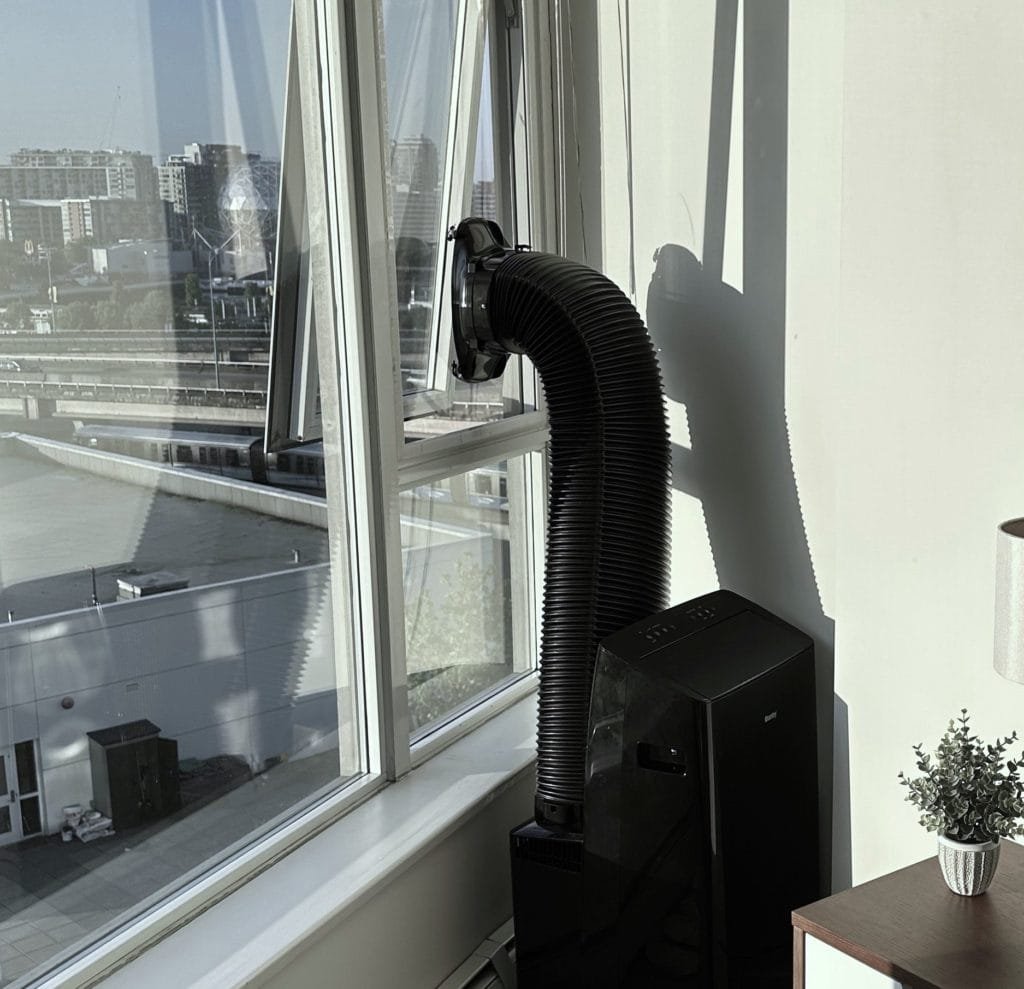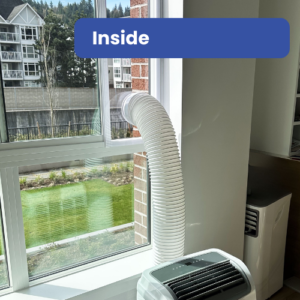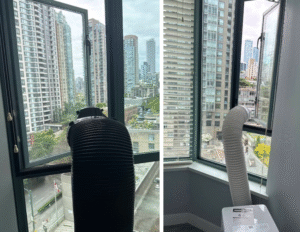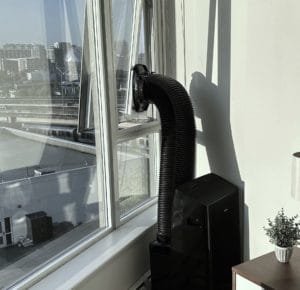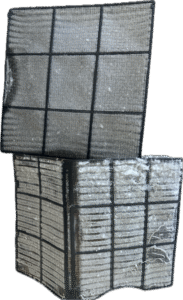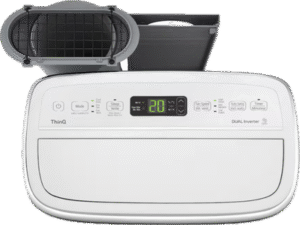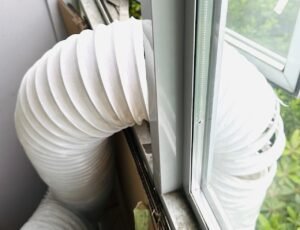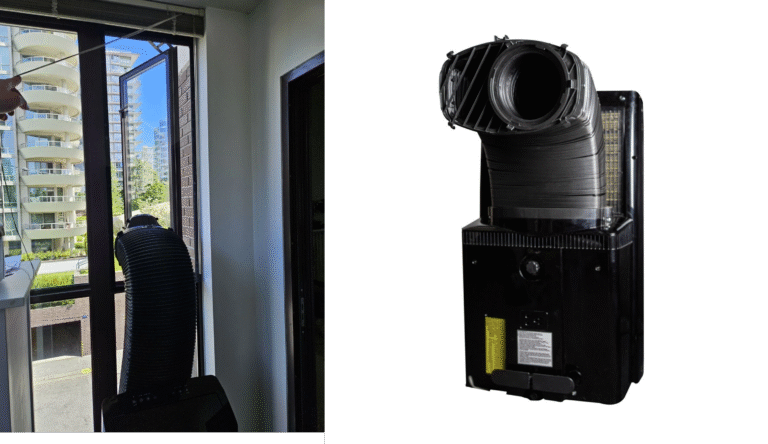
Understanding Dual-Hose Portable ACs and Window Compatibility
If you’re planning to install a dual-hose portable air conditioner in a casement or awning window, it’s important to understand how these systems operate—and the unique installation challenges they can present. Dual-hose AC units, such as those from Danby, Midea are often recognized for their strong cooling performance and energy efficiency.
While they can outperform single-hose models in larger or hotter environments, their dual-hose design and wide oval connector require careful installation and sufficient window clearance. Casement and awning windows must open wide enough to allow proper ventilation around the exhaust outlet—otherwise, warm air can recirculate and reduce cooling performance.
How Dual-Hose ACs Work
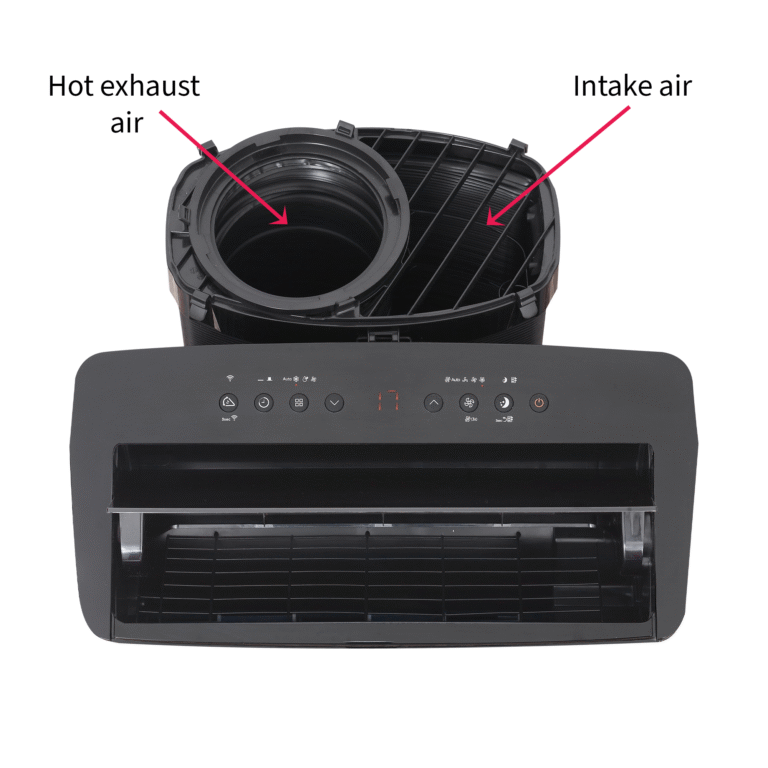
Dual-hose portable air conditioners use two separate airflows to maintain balanced pressure and improve efficiency:
Intake hose: Draws in fresh outdoor air to cool the internal condenser.
Exhaust hose: Expels hot 45 deg C+ air produced during the cooling process back outside.
Both air channels are combined within a single large oval housing, which connects directly to the AC panel or vent adapter. This setup keeps the cooling system more efficient by preventing the unit from using indoor air for exhaust—helping maintain room pressure and improving overall performance.
When installed properly—typically in a wide, low sliding window or a casement or awning window that opens at least 10 inches—dual-hose systems can deliver excellent cooling results. Proper airflow clearance and secure panel installation are key to ensuring both hoses operate efficiently without heat recirculation or air leakage.
Common Issues with Dual Hose AC's
When the Window Doesn’t Open Far Enough
Dual-hose portable ACs need enough space for hot exhaust air to vent safely. If a casement or awning window opens less than 10 inches, the exhaust air—reaching up to 50°C (122°F)—can bounce off the window and flow back toward the unit. This heated air may be drawn into the intake hose, causing the AC to overwork, run less efficiently, or even shut down from overheating.
Trapped heat can also radiate onto the AC panel, softening or melting the Velcro adhesive and causing it to detach from the window frame.
In some cases, customers are able to safely remove or adjust the restrictor on their window to allow it to open beyond 10 inches. This can improve ventilation, but should always be done carefully to avoid creating safety risks with wider openings.

Missing or Damaged Adapter
Dual-hose portable AC units require a factory adapter to connect both hoses to the panel. If this piece was not supplied or has gone missing, it will be needed for installation.
Aircon Rescue does not mount hoses directly into the acrylic panel, as this can cause cracking. Instead, the adapter is securely mounted into the panel, and your AC connects to it for a safe, reliable fit.
Replacement adapters are available from Aircon Rescue for $55.
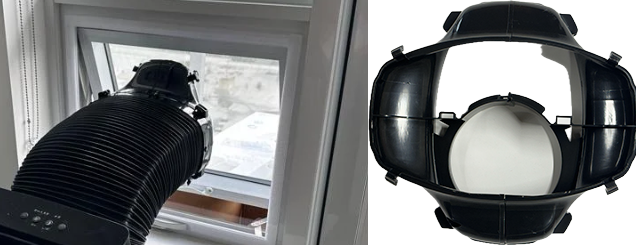
When the Hoses Aren’t Long Enough
Most dual-hose portable ACs come with limited hose lengths, typically reaching between 4 and 5 feet height. The hoses are also rigid and not very flexible, which limits how far or at what angle the unit can be positioned. For proper operation, the AC must be placed directly in front of the window so both hoses can connect cleanly without twisting or strain.
If the window opening is higher than 4–5 feet, the hoses may not reach the panel properly. In this case, the unit should be placed on a secure, elevated stand to align the hoses with the window connection and maintain smooth, unrestricted airflow.
Fragile Adapter Clips
Dual-hose portable ACs use four small locking clips to secure the hose to the oval adapter. These clips are prone to breaking, especially when the hose is attached or removed repeatedly. Once the clips fail, the hose can easily come loose or fall off entirely—often leaving tuck tape as the only way to keep it in place.
During installations, Aircon Rescue technicians demonstrate a more reliable method that avoids putting stress on the clips. This ensures a secure, long-lasting connection between the hose and adapter without the need for temporary fixes like tape.
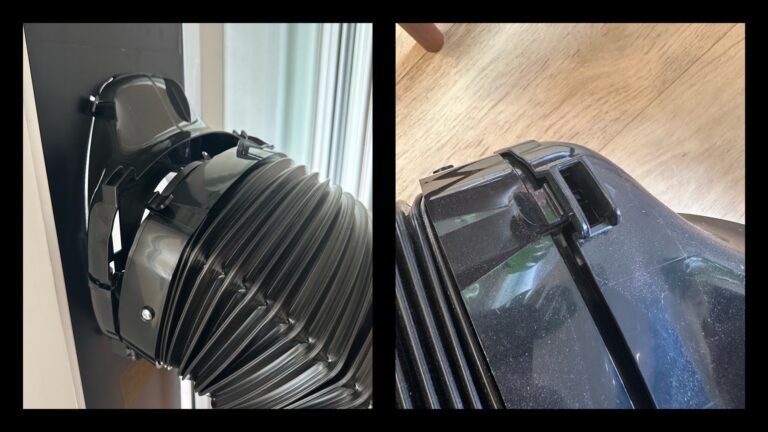
Insufficient Window Height in awning horizontal windows
Some awning windows have dimensions that are wide with heights less than 14 inches in height. These can pose a problem for dual-hose portable AC installations. The oval adapter requires a cut out in the AC panel with a heigh of 12″ to fit properly. If the window opening is less than 14″ height, there isn’t enough room for the adapter hole to be cut into the acrylic panel.
How We Build AC Panels for Dual-Hose Units
AC panels for dual-hose portable air conditioners require special care and precision. At Aircon Rescue, we use your unit’s factory adapter to mount directly into the panel. Each panel is laser-cut with a large oval opening made to the exact size of the adapter, which is then securely fastened into place for a perfect fit.
During installation, our technician will connect your AC and show you how to safely remove the adapter without damaging the fragile clips on the hose. You’ll also receive a full demo and explanation during the initial measurement appointment, so you’ll know exactly how your system works.
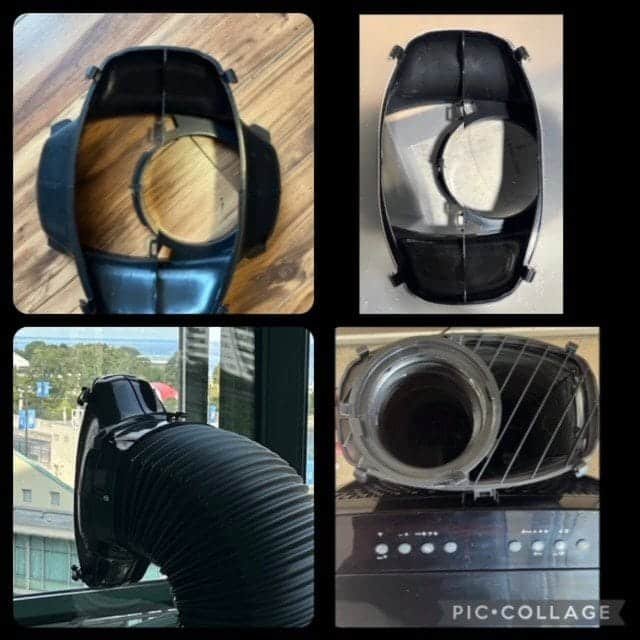
When a Single-Hose AC Might Be Better
If your home has:
Casement or awning windows that open less than 10″
Limited floor space or narrow layouts
Windows positioned above waist height
…then a single-hose portable AC may be a more practical solution. These units use a round, flexible exhaust hose and require a smaller cutout, making them:
Easier to install and remove
Compatible with more AC panel styles
Simpler to connect and disconnect
Less likely to overheat in tight window openings
One model we often recommend is the LG 10,000 BTU Dual Inverter Smart Wi-Fi Portable AC—a top performer for narrow or crank-style windows.
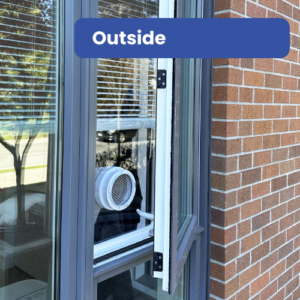
Final Thoughts
Dual-hose portable air conditioners can perform exceptionally well when installed in the right environment. However, in homes with casement or awning windows that don’t open wide enough, their performance can be limited by airflow restrictions, overheating, and fitment challenges.
Before choosing a unit, it’s worth confirming that your window style and layout are compatible—not just relying on the product specs. The right setup can make all the difference in efficiency, safety, and comfort.
If you’re unsure which configuration works best for your home, Aircon Rescue can help. We’ll guide you through the best AC panel and adapter options and ensure your installation is done properly the first time.

